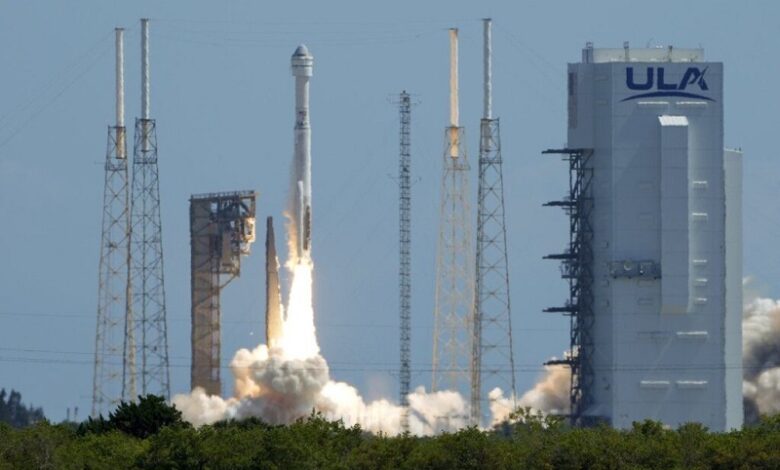Boeing’s Starliner Finally Launches Historic Flight to International Space Station After Several Delays

News Mania Desk/Agnibeena Ghosh/6th June 2024
On Wednesday, Boeing’s Starliner capsule successfully launched its first astronaut-crewed flight to the International Space Station (ISS) after several delays. The liftoff occurred at 10:53 a.m. ET from the Kennedy Space Center in Cape Canaveral, Florida. With weather conditions being 90% favorable, NASA’s Derrol Nail noted during a livestream that the team was closely monitoring cumulus cloud formations, as flying through such clouds could generate lightning strikes. Approximately 15 minutes post-launch, the rocket separated from the spacecraft, allowing the Starliner to continue its journey independently.
The Starliner, designed to carry a seven-person crew, had only two astronauts aboard for this “test drive”: NASA astronauts Barry “Butch” Wilmore, 61, a former U.S. Navy captain commanding the flight, and Sunita Williams, 58, a former Navy service member piloting the mission. The United Launch Alliance (ULA), responsible for manufacturing and operating the launch rockets, started loading cryogenic propellant into the rocket early in the morning, signaling readiness for liftoff.
Wilmore and Williams entered the Starliner capsule around 8:00 a.m. ET, conducting a series of checks including communication and suit verifications, as reported by Boeing Space on X. This mission marks Wilmore’s third journey to the ISS, and for Williams, it is her third spaceflight, making her the first woman to pilot an orbital spacecraft on a test flight. Following the launch into orbit, the spacecraft will undertake a 24-hour journey to the ISS, during which the crew will test various flight systems and equipment.
Despite the Starliner being capable of autonomous operation, Wilmore and Williams will manually control the spacecraft at certain stages to demonstrate its manual flight capabilities. Once docked at the ISS, the astronauts are scheduled to spend one week aboard, evaluating the spacecraft and its systems. Upon re-entry, the Starliner will deploy parachutes and an airbag system, ensuring a safe landing in the western United States.
The Starliner launch faced numerous delays before this successful mission. Initially set for May 6, the crewed flight was postponed due to an oxygen valve issue on the ULA rocket. A new date was then scheduled for May 25, but a helium leak in the service module led to another delay. An attempt on June 2 was also scrubbed just minutes before liftoff due to a malfunction with the ground launch sequencer.
If the mission proves successful, NASA could certify the Starliner for regular missions to and from the ISS. This would diversify NASA’s transportation options, which have primarily relied on SpaceX’s Dragon spacecraft. These missions are part of NASA’s broader Commercial Crew Program, which aims to use American rockets and spacecraft to launch astronauts and cargo to the ISS, thereby paving the way for future moon and Mars missions.






